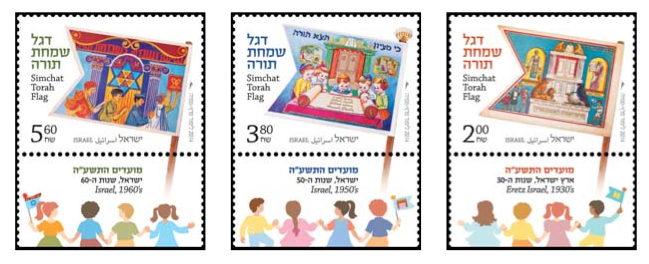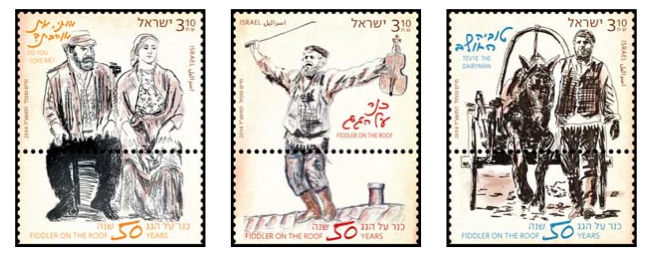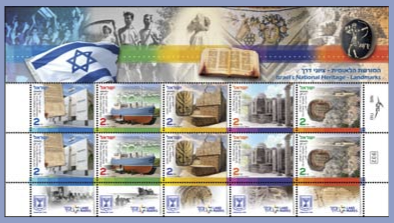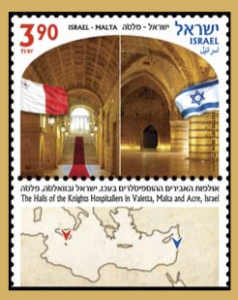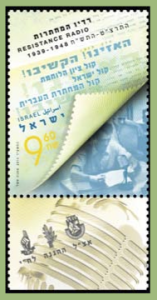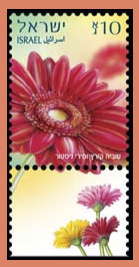[from israel Post; this stamp will be issued September 9, 2014]
Wolfgang von Weisl
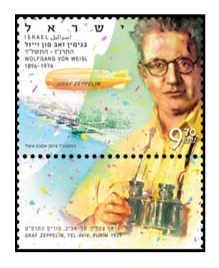 Dr. Benjamin Zeev (Wolfgang Johannes) von Weisl (1896, Vienna – 1974, Gadera) was a Viennese physician and a decorated WWI artillery corps officer, an international author and journalist and a renowned orientalist, as well as a Zionist leader, one of the founders of the Revisionist movement and a pioneer in the struggle for Eretz Israel.
Dr. Benjamin Zeev (Wolfgang Johannes) von Weisl (1896, Vienna – 1974, Gadera) was a Viennese physician and a decorated WWI artillery corps officer, an international author and journalist and a renowned orientalist, as well as a Zionist leader, one of the founders of the Revisionist movement and a pioneer in the struggle for Eretz Israel.
Von Weisl was one of the most colorful and original figures in the history of the Zionist movement. Legends swirled around him and stories of his adventures and his intellectual heritage could fill volumes.
Zionism had only one meaning for von Weisl: living in Eretz Israel, participating in building the country and ensuring its independence in order to realize the greatest project in history – the return to Zion. He immigrated to Israel in 1922, calling on the Jews: “You see these mountains? There beyond the mountains lies your homeland. Pack up and go. Legal or illegal, go to the land of your forefathers. Before it is too late.”
From 1992-1948 von Weisl served as the first instructor in the Haganah’s first officers’ course. He travelled throughout the Arab countries, meeting with kings and sheiks in an attempt to persuade them to recognize Zionism. He was a pioneer in the struggle for the Western Wall, edited and founded newspapers, served as a delegate to Zionist conventions; a chairman of the HaTzohar revisionist party, he was arrested on “Black Sabbath” along with other leaders of the Yishuv and went on a hunger strike lasting 28 days on behalf of the Prisoners of Zion. All of these and more were milestones en route to his single and sole goal: the Jewish State.
The stamp depicts two of the many adventures of his life:
On Purim 1929 Jews and Arabs from all around the country as well as neighboring countries celebrated the Carnival in Tel-Aviv. When the whirring of the engines of the Zeppelin airship was heard in the skies over Eretz Israel, the traffic stopped and the crowds cheered at the sight of the latest technological wonder. Dr. Wolfgang Zeev von Weisl, the physician aboard the ship and the representative of the German newspaper conglomerate “Ullstein Verlag” poured 30 kilos of confetti from the ship, a contribution to the Purim merriment and then toasted the “State of the Jews” with a glass of Carmel Mizrahi wine, with German ministers, members of parliament and an Egyptian journalist who was onboard.
In 1948, at the age of 52, he participated in the battles to liberate the Negev. A column of Egyptian tanks was moving forward, threatening to cut off the Negev towns and was only a few kilometers away from the road to Tel-Aviv, which remained open and undefended. Von Weisl, who commanded an artillery battery of two of the four cannons that were allotted to the defense of the whole Negev, climbed a tall tree, binoculars hanging around his neck, and bellowed orders from the treetop. One shell exploded by the front wheel of the lead Egyptian tank. The tank stopped and the entire column of armored vehicles turned around and fled. Von Weisel said a “She’Hecheyanu” blessing and sent a postcard to his wife: “I aimed. God hit”.
His dream – to be a soldier in the founding army of the Jewish State – came true.
Niva von Weisl
Granddaughter of Benjamin Zeev von Weisl
The background of the stamp features a photo of Tel-Aviv in the 1930’s, courtesy of the U.S. Library of Congress.
Stamp tab and First Day Cover – photos of Benjamin Zeev von Weisl, courtesy of Niva von Weisl.
Technical Specifications:
Stamp Size (mm): H 30 / W 40
Plates: 956
Stamps per Sheet: 15
Tabs per Sheet: 5
Method of printing: Offset
Security mark: Microtext
Printer: Cartor Security Printing, France

